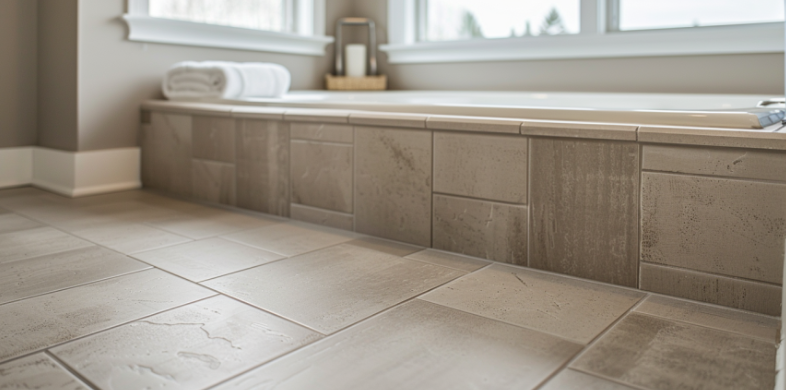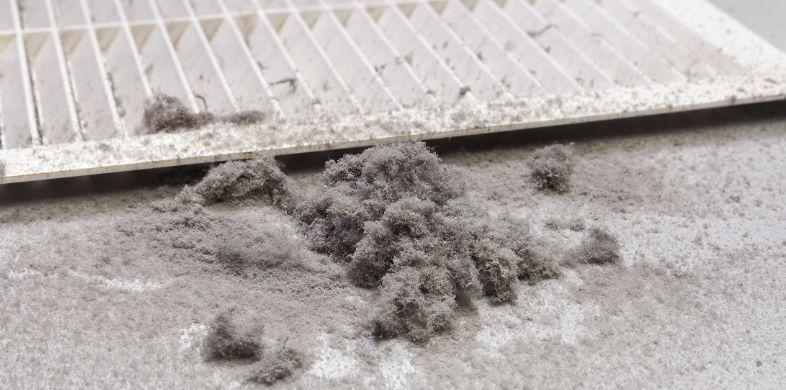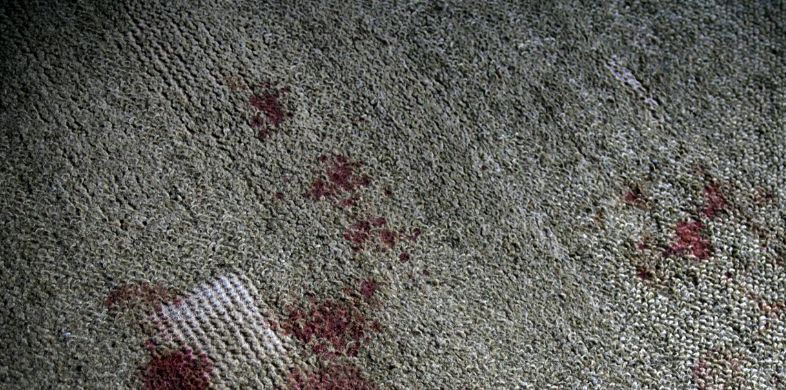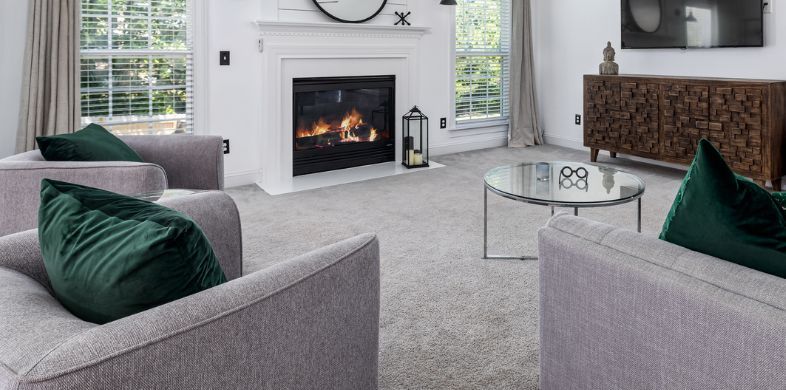
Preventative Maintenance for Tile Floors: The Ultimate Guide
TL;DR: Maintaining your tile floors is essential for preserving their appearance and longevity. Different types of tiles require specific cleaning techniques, from ceramic and porcelain to natural stone and vinyl/laminate. Daily cleaning involves sweeping, vacuuming, and mopping with appropriate tools and cleaners. Grout cleaning and sealing are also vital for preventing stains and mold growth. Each room, such as the kitchen, bathroom, and living areas, has unique maintenance needs based on their function and moisture levels. Regular maintenance helps prevent damage and ensures your tile floors stay beautiful for years to come. Consider outsourcing professional tile cleaning services for thorough maintenance and restoration, such as those offered by Steamy Concepts.
As a homeowner, you probably opted for tile floors because of their unique aesthetics and durable construction. However, a tile floor still requires time and attention in terms of cleaning and maintenance if you want to get the most out of it.
Our task today is to examine why preventative maintenance for tile floors is important and provide expert tips and tricks to help you prolong the lifespan of your tiles. We’ll discuss the different types of tile floors and their associated best cleaning practices, grout maintenance, and optimal cleaning and protection techniques. Let’s go!
What are the Different Types of Tile Floors?
Before diving into the specific maintenance techniques, let’s dissect the different tile floor types, as this is crucial in determining their maintenance requirements. The most common types of tile floors include ceramic and porcelain tiles, natural stone tiles, and vinyl and laminate tiles:
Ceramic and Porcelain Tiles
Ceramic and porcelain tiles are widely used due to their durability and versatility. The material used for ceramic tiles is clay, which is manipulated at very high temperatures to harden it, while porcelain results in denser and less porous tiles. Both types require minimal maintenance effort and no specialized cleaning solutions.
Natural Stone Tiles
Associated with beauty and elegance, natural stone tiles usually consist of marble, granite, or travertine. Due to their porous nature, they require extra care and maintenance, and harsh and abrasive cleaners are out of the question since they tend to damage the tiles’ surface.
Vinyl and Laminate Tiles
Vinyl and laminate tiles are popular choices for their affordability and easy maintenance. If you need tiles for a high-moisture area, the non-fluid retention properties of vinyl or laminate tiles make them ideal for you. Maintenance of vinyl and laminate tiles is relatively straightforward.
Daily Cleaning and Maintenance
Regular daily cleaning and maintenance are essential for keeping your tile floors in pristine condition. By incorporating simple cleaning techniques into your routine, you can prevent the build-up of dirt, grime, and stains and maintain the shine and durability of your tiles.
- Sweeping and Vacuuming. Regularly vacuuming or sweeping your tile floors removes loose dirt, dust particles, and other debris. When using a vacuum cleaner, make sure to turn off the beater bar or use a setting specifically designed for hard floors. Beater bars can cause damage to the tiles, particularly textured ones. Use vacuum cleaner attachments to clean the edges and spaces between tiles.
- Mopping Techniques. Mopping is an essential part of daily tile floor maintenance. When mopping, stick to microfiber mops, as they’re perfect for all types of tiles. When you mop, start at the furthest corner of the room and move toward the exit as you clean. Remember to rinse the mop as often as possible in clean water and wring out excess moisture.
- Choosing the Right Cleaning Products. Choosing the right cleaning products is crucial for maintaining the beauty and integrity of your tile floors. Mild detergents or pH-neutral cleaners are generally safe for ceramic and porcelain tiles. Natural stone tiles require pH-neutral cleaners specifically designed for these types of tiles.
Grout Cleaning and Maintenance
Grout is an essential component of tile floors, and its cleanliness is key to the appearance and functionality of your tile floor. One thing that is certain to happen to grout over time is that the color fades as a result of piling dirt, non-addressed stains, or the presence of mold.
- Regular Grout Cleaning. Depending on the severity of the staining and the type of tiles you have, you can use several methods to clean grout. One simple method is to use a mixture of water and baking soda. This paste-like substance is easy to apply to grout lines using a toothbrush. Allow the paste to sit for a few minutes before rinsing it off with clean water.
- Preventing Mold and Mildew. Regular cleaning and preventative measures can help keep mold and mildew at bay and maintain the cleanliness of your grout. A very effective strategy for preventing mold and mildew is to keep the area well-ventilated. If mold or mildew growth is already present, you can rely on commercial products specifically designed to remove and prevent their recurrence.
- Grout Sealing. Sealing the grout is an additional step you can take to protect your grout and prevent staining. These sealers act as a physical barrier, preventing liquids from getting through the grout lines. They also facilitate cleaning by preventing dirt and stains from becoming deeply embedded in the grout. Remember to apply grout sealer only on already clean and dry lines.
Preventative Maintenance for Tile Floors in Different Rooms
Different rooms in your home may have specific maintenance requirements based on their function and the type of tile floors they have. Check out some expert tips and tricks on easy maintenance of different tile floors:
Kitchen Tile Floors
Kitchens are prone to spills, stains, and grease, which makes regular cleaning and maintenance vital. Aim to wipe up spills swiftly to prevent the formation of stains and clean the floor often using a mild detergent or a pH-neutral cleaner suitable for your type of tile.
A good rule of thumb is to stay away from cleaners that have distinct abrasive properties or use brushes that may damage the tiles. In addition to being the spill center of your home, the kitchen also has several high-traffic areas, namely the sink and stove, which have higher maintenance requirements. An easy solution is to use mats or rugs near the sink and stove to catch spills and prevent them from reaching the floor.
Bathroom Tile Floors
Bathrooms are constantly exposed to moisture, humidity, and cleaning products, making them susceptible to stains, mold, and mildew. Regular maintenance helps stop mold from forming in the first palace, which is a much better strategy than trying to eradicate it once it appears.
There are pH-neutral cleaners explicitly designed to address this type of tile floor. Remember to always stick closely to the manufacturer’s instructions when using any commercial cleaner. Pay attention to grout lines and corners, as they are hotspots for mold and mildew development in high-moisture areas of your home.
Finally, make a point to provide optimal ventilation through exhaust fans or natural ventilation via windows. Wiping down wet surfaces, such as shower walls and tubs, helps prevent excess moisture from seeping into the grout and causing damage. Turning to professional tile and grout cleaning services is the most reliable way to eradicate bathroom mold completely.
Living Room / Bedroom Tile Floors
Living rooms and bedrooms often have lower moisture levels and foot traffic than kitchens and bathrooms. However, that doesn’t mean you can skimp on maintenance just because there’s less frequency associated with these floors.
The two methods you already know, sweeping and vacuuming, are the best ways to remove the debris gathered on your tile floor. Follow up with moping techniques, using either a microfiber cloth or any damp mop soaked in mild detergent or, in case of more sensitive tile types, a pH-neutral cleaner. Pay attention to high-traffic areas near entryways and seating areas, as they may require more frequent cleaning.
Consider using area rugs or mats in living rooms and bedrooms. They don’t just protect the floor surface but also introduce warmth and aesthetics. Such rugs can help significantly reduce wear and tear in high-traffic areas and provide an added comfort element.
Conclusion
Tile floors are practical, look great, and are fairly easy to care for. However, homeowners often take this last aspect, maintenance, for granted, resulting in reduced aesthetics, damage to the tiles, or even an increased risk of certain health hazards. Luckily, all this can be mitigated by sticking to a routine for preventative maintenance for tile floors.
You can always outsource your tile floor care to professionals. Steamy Concepts always puts customers first. Contact us now for a free quote regarding the wide array of services we use, ranging from tile cleaning and odor removal to mold remediation and water damage restoration!
Table of Contents
Other Blogs You May Be Interested In










Leave a Reply